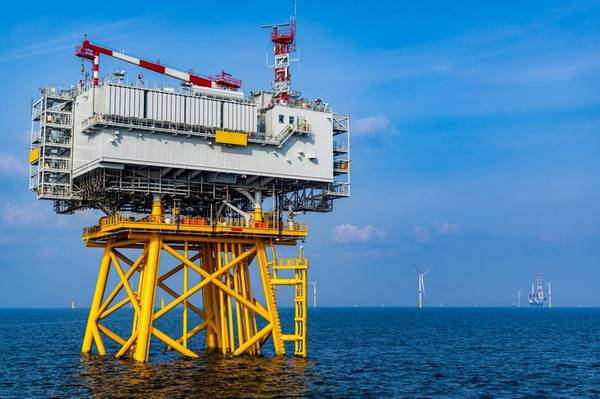
Energy and telecom cable firm Prysmian Group has secured contracts worth approximately €1.8 billion (currently around $1.9 billion) in total with the Dutch transmission system operator TenneT for the two grid connection projects IJmuiden Ver Alpha and Nederwiek 1 to link two future offshore wind farms located in the Dutch North Sea to the province of Zeeland located in the southwestern part of the Netherlands.
Prysmian said the contracts’ aggregate value increases the total value of Prysmian’s order book to about €8.5 billion.
Prysmian Group will be responsible for the design, engineering, manufacturing, installation, testing and commissioning of two 525 kV HVDC submarine and land cable systems — including fibre optic cables — and all related accessories for the IJmuiden Ver Alpha and Nederwiek 1 offshore wind farms, for a total of 4 GW capacity. ©TenneT
©TenneT
IJmuiden Ver Alpha is an offshore grid connection system with around 176 km of route length (of which about 164 km offshore), while Nederwiek 1 has a total route length of approximately 217 km (of which 208 km offshore). The delivery of the first connection is scheduled for 2029, whereas the second is scheduled for 2030.
Each cable system consists of two single-core 525 kV HVDC cables (with XLPE insulation for the submarine portion and P-Laser insulation for the land route), one single-core metallic return cable and one fibre optic cable. Submarine cables will be manufactured at Prysmian Group’s plants in Pikkala (Finland) and Arco Felice (Italy), while land cables will be produced in Gron (France).
Marine installation operations will be performed by Prysmian`s cable laying vessels and in partnership with Deme Group, a Belgian offshore installation contractor.
 525 kV HVDC XPLE Cable System - ©TenneT
525 kV HVDC XPLE Cable System - ©TenneT
"Prysmian Group has reached in 2022 a significant milestone, successfully passing the development and testing of the first 525 kV extruded submarine full cable system for High Voltage Direct Current (HVDC) applications. The IJmuiden Ver Alpha and Nederwiek 1 projects are now the first projects where Prysmian Group deploys its breakthrough 525 kV offshore cable technology, specifically designed to support the energy transition thanks to its key features that enable a massive increase in transmission capacity to 2 GW, which is more than double the value achieved with 320 kV DC systems currently in service," Prysmian said.
“We are proud to be part of this strategic project that confirms Prysmian as a reliable partner in support of the Dutch ‘Routekaart 2030’ plans to reduce net GHG emissions and achieve the Netherlands' carbon neutrality targets. The implementation of our innovative 525 kV HVDC technology for submarine cable systems underlines our ongoing commitment to the energy transition and enables our customers to further reduce the costs of offshore wind power and minimize their environmental impact," said Hakan Ozmen, EVP Projects BU, Prysmian Group.
Tim Meyerjürgens, COO TenneT says: “We are proud that we developed this new cable system together with the market. Our qualification programme has shown that Prysmian is on track for this new offshore connection standard. By realizing the world’s first 525 kV XLPE HVDC offshore cable systems to connect 2 GW projects, we jointly reconfirm our front runner position in offshore grid development and our commitment to deliver on the joint ambition to develop the North Sea into the green power plant of Europe.”


